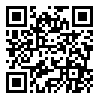Received: 2015/04/7 | Accepted: 2015/05/13 | Published: 2015/08/17
URL: http://ijwph.ir/article-1-484-en.html
BibTeX | RIS | EndNote | Medlars | ProCite | Reference Manager | RefWorks
Send citation to:
2- Janbazan Medical and Engineering Research Center (JMERC), Tehran, Iran.
3- Psychiatry and Behavioral Sciences Research Center, Mashhad University of Medical Sciences, Mashhad, Iran ,
Aims: Mustard gas is a toxic chemical agent that was repeatedly used by the Iraqi army against Iranian civilians and non-civilians during 8 years of war. The aim of this study was to assess the variety of mental disorders in chemically eye injured.
Instrument & Methods: In a cross-sectional study in 2010 in Mashhad City, Iran, 148 sulfur mustard exposed veterans who suffered severe ocular injury were evaluated. The diagnostic examination was conducted by a psychiatrist in a 20-minute interview. Psychological problems were assessed in 5 axes using DSM-IV (Diagnostic and statistical manual of mental disorders 4th edition). Statistical analysis was conducted using SPSS 22 software and Pearson correlation coefficient and Chi-square tests.
Findings: 92 samples (62.2%) had abnormal temper, 62 samples (41.9%) had depression and 61 samples (41.2%) had irritability. 86 samples (58.1%) were affected by mental disorders 50 samples (33.8%) by anxiety disorder and 45 samples (30.4%) by types of depression. Post-traumatic stress disorder and dysthymic were, respectively, the most common anxiety and depression disorders. 3 subjects (2/0%) had symptoms of dementia and one case (0.7%) suffered from schizophrenia. Family problem was the most common environmental stress. 18 new patients (12.2%) were identified. A significant relationship was observed between the number of children and types of mental disorders (p<0.001).
Conclusion: Rates of psychiatric disorders among veterans with severe chemical eye injuries are several times more than Iranian population and almost twice the frequency of these problems is non-chemical warfare victims.








